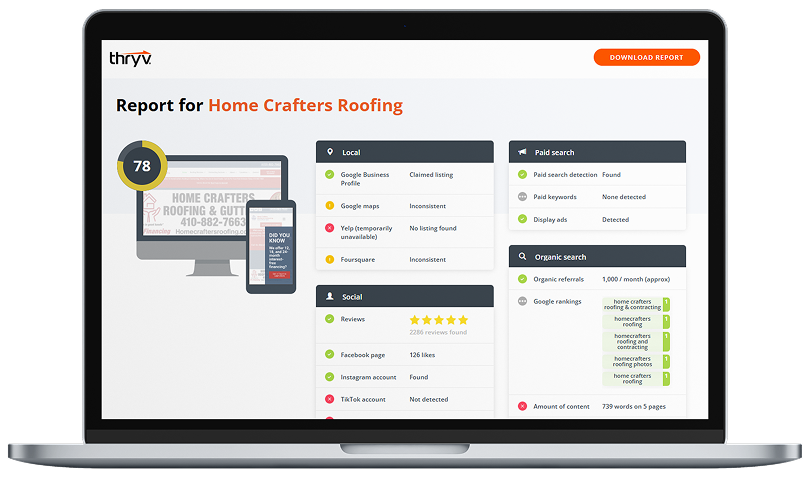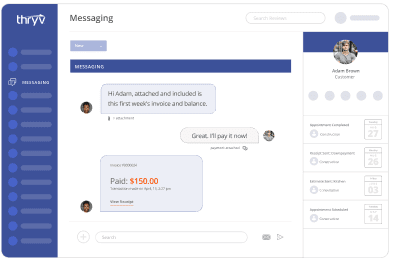Imagine pouring your heart (and savings) into a new business. If you’re a business owner, you know what this is like. Maybe you own a cleaning company, a dental practice, or an HVAC business. You’ve used your expertise, and you’re finally turning it into something tangible. You’re putting in the hours, the work, the caffeine. But then that question hits: “When will this actually start paying off?”
That’s where the break-even point comes in. It’s not just a finance term. It’s that magic milestone where your revenue catches up to your costs. No losses. No profits. Just even ground. In this post, we’ll break down what the break-even point is, why it matters for anyone running or starting a business, and how to calculate it (without needing a finance degree).
What is the break-even point?
The break-even point is the moment your business stops losing money and starts covering its costs. In other words, it’s when your total revenue equals your total expenses—no profit, but no loss either.
Think of it as the financial tipping point. Before you reach it, you’re investing more into your business than you’re making. After you reach it, every sale starts contributing to actual profit.
For example, if it costs you $5,000 a month to run your business (including rent, supplies, salaries, etc.), your break-even point is when your sales generate exactly $5,000 in revenue. Hit that number, and you’re officially breaking even.
Understanding your break-even point helps you:
- Set realistic sales goals
- Price your products or services smartly
- Plan for growth or expansion
- Spot early warning signs if your business isn’t on track
Whether you’re launching something new or reevaluating an existing business, knowing your break-even point gives you a clear target to aim for and a better handle on your financial health.
What is a break-even point analysis?
A break-even point analysis is a financial calculation that shows you how much you need to sell to cover your costs and not lose money. It’s a simple but powerful tool that helps you understand when your business (or a specific product) will become profitable.
This analysis takes into account two types of costs:
- Fixed costs: Expenses that don’t change no matter how much you sell (like rent, salaries, insurance).
- Variable costs: Expenses that increase as your sales increase (like materials, shipping, or production costs).
By comparing these costs to your sales price, a break-even analysis tells you the number of units you need to sell, or how much revenue you need to bring in, to “break even.”
Why it matters:
- Launch planning: A break-even analysis helps you evaluate if a business idea is financially viable.
- Pricing strategy: It guides you in setting the right price for products or services.
- Decision-making: It’s useful for budgeting, predicting sales, and understanding financial risks.
Whether you’re pitching to investors, preparing a business plan, or just trying to sleep better at night, a break-even point analysis gives you a clearer picture of what success looks like and how to get there.
What is the break-even point formula?
To calculate your break-even point, you can use a simple formula that shows exactly how many units you need to sell, or how much revenue you need to earn, to cover your costs.
How do you calculate the break-even point in units?
The formula to calculate your break-even point in units is:
Break-Even Point (in units) = Fixed Costs ÷ (Selling Price per Unit – Variable Cost per Unit)
Let’s break that down:
- Fixed Costs are your consistent monthly or yearly expenses (like rent, salaries, utilities).
- Selling Price per Unit is how much you charge for one product or service.
- Variable Cost per Unit is how much it costs to produce or deliver one item (like materials or packaging).
Example:
If your fixed costs are $10,000 per month, you sell your product for $50, and it costs you $30 to make each one, your break-even point would be: $10,000 ÷ ($50 – $30) = 500 units.
That means you’d need to sell 500 units just to cover your costs. Anything beyond that is profit.
You can also calculate the break-even point in dollars instead.
Try Workforce Center
Onboard, manage, and pay your employees with Thryv’s new Workforce Center.
Try NowHow to calculate the break-even point in dollars?
Here’s the adjusted formula to calculate the break-even point in dollars.
Break-Even Point (in dollars) = Fixed Costs ÷ Contribution Margin Ratio
But what is a contribution margin ratio?
- Contribution Margin Ratio = (Selling Price – Variable Cost) ÷ Selling Price
This version is beneficial if you work with revenue targets rather than unit sales.
Example:
If your fixed costs are $8,000 per month, you sell your product for $100, and it costs you $40 to make each one, your break-even point in dollars would be: $8,000 ÷ (($100 – $40) ÷ $100) = $8,000 ÷ 0.60 = $13,333.33
That means you’d need to make $13,334 in sales to break even. Any revenue beyond that is profit.
Break-even formulas may look simple, but they can unlock significant insights when you’re setting goals, adjusting prices, or planning for growth.
How to Calculate Break-Even Point
1. List your fixed costs.
2. Determine your variable costs per unit.
3. Set your selling price.
4. Calculate your contribution margin.
5. Choose your calculation method.
1. List your fixed costs.
Start by identifying all your ongoing expenses that remain constant regardless of sales volume. This includes rent, salaries, insurance, software subscriptions, and utilities.
2. Determine your variable costs per unit.
Next, figure out how much it costs to produce or deliver one unit of your product or service. This may include raw materials, packaging, shipping, or hourly wages associated with production.
3. Set your selling price.
Decide how much you’ll charge for each unit. Your selling price should accurately reflect both your market positioning and the value you offer customers. Market positioning refers to how you want your business to be perceived compared to competitors. For example, if you aim to be perceived as a premium or luxury brand, your pricing should be higher to signal exclusivity and quality. On the other hand, if you’re positioning yourself as a budget-friendly or value-focused option, your price should be more competitive to appeal to cost-conscious customers.
At the same time, your price should reflect the value your product or service provides. Value isn’t just about the product itself. Value encompasses the overall experience, including convenience, design, customer support, and how well the product addresses a problem. Even if two businesses sell similar items, customers might be willing to pay more for the one that saves them time, feels more reliable, or better aligns with their lifestyle or values. In short, pricing isn’t just a financial decision. It’s a strategic tool that communicates your brand’s identity and reinforces why your product is worth the cost.
4. Calculate your contribution margin.
Your contribution margin represents the amount of money left over from each sale after you subtract the variable costs associated with producing or delivering that item. This leftover amount doesn’t go directly into your profit. Instead, it goes toward covering your fixed costs (like rent, salaries, or insurance). Once those fixed costs are fully covered, any additional contribution margin from future sales becomes pure profit.
To find it, subtract your variable cost per unit from your selling price.
Remember this formula:
Contribution Margin Ratio = (Selling Price – Variable Cost) ÷ Selling Price
5. Choose your calculation method.
Use the unit-based formula if you want to know how many units you need to sell, or the dollar-based formula if you want to know how much total revenue you need.
6. Run the numbers.
Plug your values into the appropriate formula, and you’ll have your break-even point. This provides a concrete sales goal to guide decisions regarding pricing, marketing, and budgeting.
Tip: Revisit your break-even analysis regularly, especially if your costs or prices change. It’s not a one-time calculation; it’s an ongoing part of understanding your business’s financial health.
Why Knowing Your Break-Even Point Can Boost Your Business
Understanding your break-even point is more than just a financial exercise. It’s a powerful tool that can inform many essential business decisions. By knowing exactly how many sales you need to cover your costs, you can set realistic goals, price your products strategically, and manage your expenses more effectively. This clarity helps reduce risk, improve cash flow, and keep your business on solid footing, especially during challenging times.Moreover, regularly calculating and revisiting your break-even point keeps you connected to the financial health of your business, allowing you to adapt quickly as costs or market conditions change. Whether you’re launching a new product, planning growth, or simply trying to understand your numbers better, the break-even point gives you a clear benchmark for success.In short, knowing your break-even point empowers you with the insight and confidence to make smarter business choices, and ultimately, helps turn your passion into profit.


